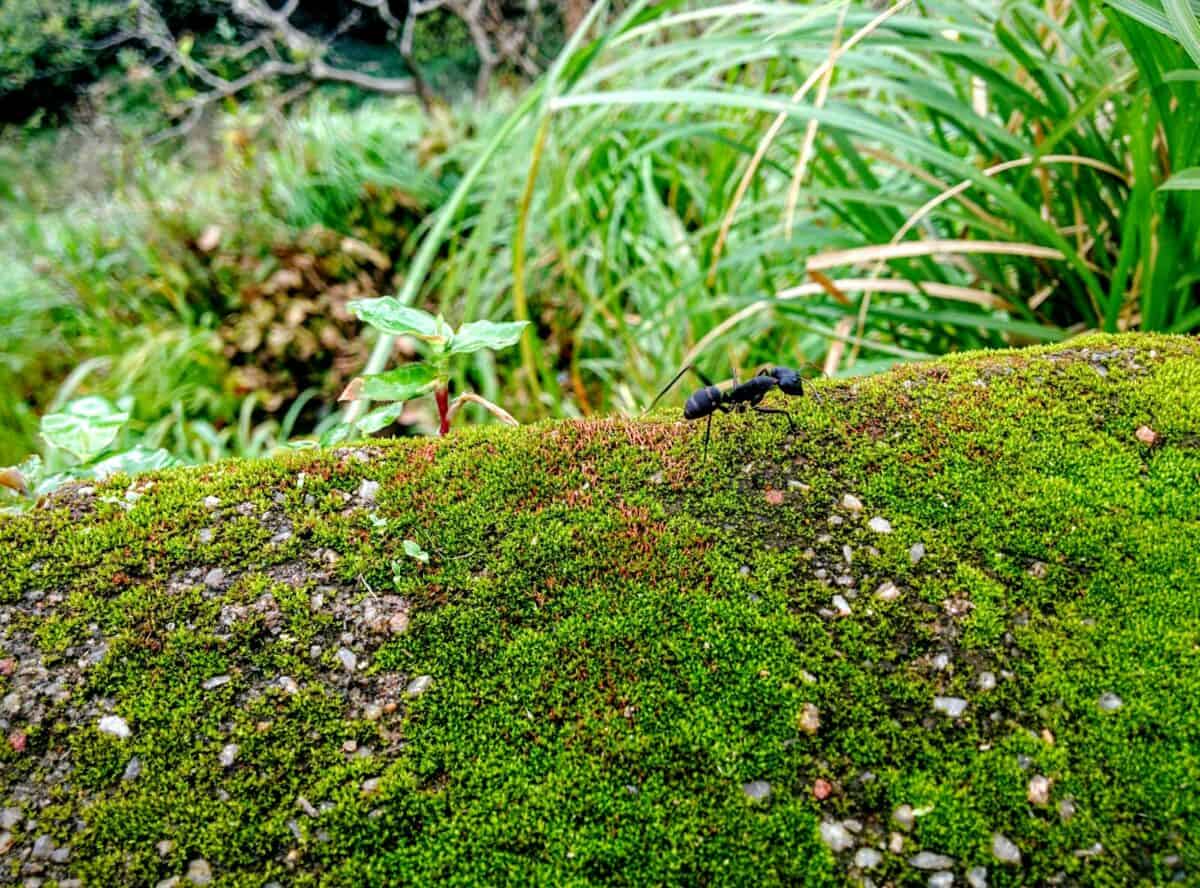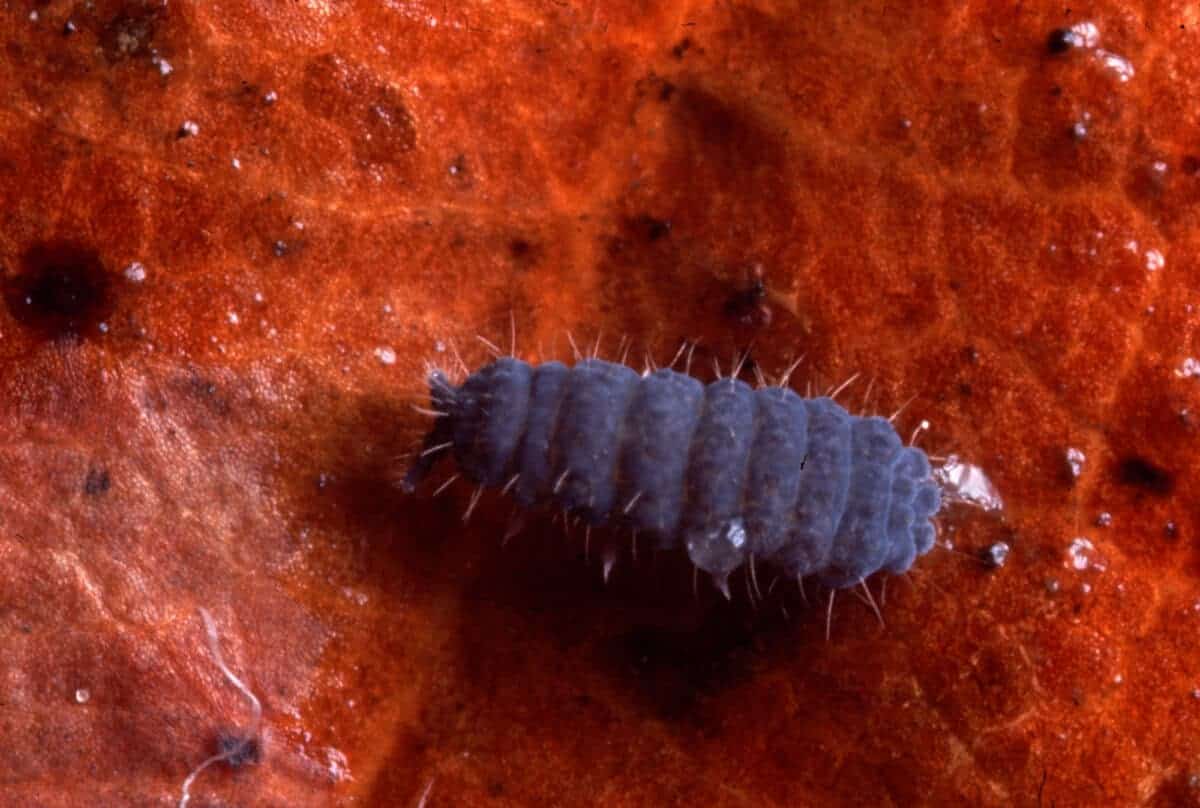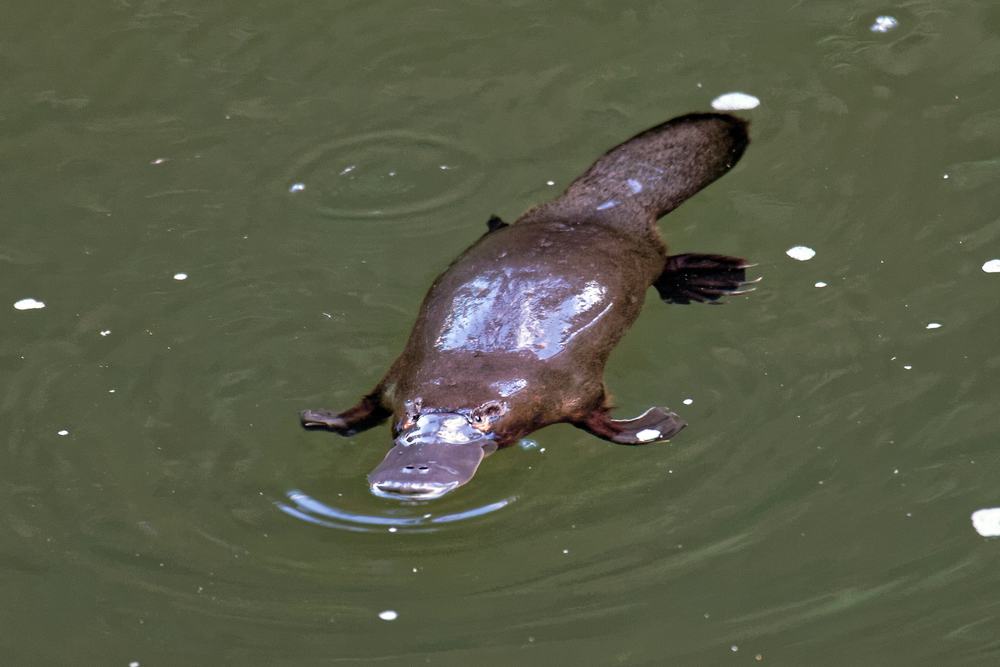The natural world has a remarkable ability to surprise even the most knowledgeable scientists. Throughout history, researchers have encountered phenomena that challenge existing paradigms, rewrite textbooks, and expand our understanding of life on Earth. From unexpected discoveries in remote locations to bizarre animal behaviors and geological wonders, these scientific surprises remind us that nature still holds many secrets. This article explores fourteen remarkable instances when natural phenomena left the scientific community stunned, showcasing the wonderful unpredictability of our world and the continuous evolution of scientific knowledge.
14. The Immortal Jellyfish That Reverses Aging

In the 1990s, scientists were astonished to discover that the Turritopsis dohrnii jellyfish can essentially live forever. When this tiny, bell-shaped creature faces environmental stress or physical damage, it can revert to its juvenile polyp stage through a process called transdifferentiation — essentially reversing its life cycle. This biological immortality shocked researchers, as it contradicted fundamental assumptions about aging and death being inevitable biological processes. The jellyfish’s cells can transform into different cell types, effectively allowing it to start its life cycle over repeatedly. Since this discovery, researchers have been studying the jellyfish’s unique cellular mechanisms in hopes of understanding human aging and potential medical applications, though immortality remains elusive for humans.
13. The Existence of Extremophiles in “Impossible” Environments

When scientists first discovered microorganisms thriving in environments once thought completely inhospitable to life, it revolutionized our understanding of life’s possibilities. These extremophiles survive in conditions that would kill most organisms: near-boiling hydrothermal vents, extremely acidic mine drainage, the crushing pressures of the deepest ocean trenches, and even within nuclear reactors. The discovery of Deinococcus radiodurans in 1956, a bacterium capable of surviving radiation levels 1,000 times what would kill a human, particularly stunned researchers. These findings forced scientists to reconsider the boundaries of habitable environments both on Earth and potentially on other planets. Extremophiles have expanded astrobiologists’ search parameters for extraterrestrial life and inspired numerous biotechnology applications, from heat-stable enzymes used in PCR testing to potential radiation-resistant materials.
12. The Living Fossil Coelacanth’s Surprise Reappearance

When a strange fish appeared in a South African fishing trawl in 1938, it sent shockwaves through the scientific community. The coelacanth, a lobe-finned fish believed extinct for 65 million years, had mysteriously reappeared, living quietly in the deep waters off the African coast. Prior to this discovery, scientists knew coelacanths only from fossils dating back to the Devonian period (around 400 million years ago), and they had mysteriously disappeared from the fossil record during the time of the dinosaurs’ extinction. Finding a living specimen was comparable to discovering a living dinosaur. The coelacanth revealed itself as a remarkable “living fossil” with unique features including a hinged skull, a primitive lung-like organ, and fin structures suggesting an evolutionary link between fish and the first land-dwelling tetrapods. This discovery dramatically illustrated how incomplete our knowledge of ocean biodiversity remains, with new populations later found near Indonesia in 1997, further expanding the known range of this once “extinct” species.
11. The Duck-Billed Platypus Nature’s Evolutionary Puzzle

When European naturalists first encountered specimens of the platypus in the late 18th century, many dismissed them as elaborate hoaxes. This bizarre Australian mammal challenged taxonomic categories with its duck-like bill, beaver-like tail, otter-like feet, and, most surprisingly, its ability to lay eggs despite being a mammal. The scientific community was in disbelief, with George Shaw, who produced the first description of the animal in 1799, actually taking scissors to the preserved specimen to check for stitches. The platypus continued to surprise scientists well into modern times. In 2004, researchers discovered that the male platypus produces venom delivered through spurs on its hind legs, making it one of the few venomous mammals. Even more remarkably, genome sequencing revealed the platypus has ten sex chromosomes (compared to humans’ two) and shares genes with birds, reptiles, and mammals. The platypus remains one of nature’s most profound examples of convergent and divergent evolution, forcing scientists to rethink mammalian evolution and classification.
10. The Quantum Entanglement of Photosynthesis

In 2007, scientists at the University of California, Berkeley, made a discovery that bridged quantum physics and biology in an unprecedented way. They found evidence that plants and some bacteria use quantum mechanical effects—specifically quantum entanglement—to achieve near-perfect efficiency in photosynthesis. This discovery shocked the scientific community because quantum effects were thought to disappear in warm, wet biological systems. The research revealed that during photosynthesis, a captured photon creates a quantum wave that simultaneously explores all possible energy transfer pathways and then instantaneously “chooses” the most efficient route to the reaction center. This quantum coherence explains how plants can convert sunlight to energy with nearly 100% efficiency, far outperforming human-made solar cells. The finding created an entirely new field of quantum biology and challenged the long-held belief that quantum effects were irrelevant to biological processes. This discovery continues to influence both our understanding of fundamental biological processes and the development of more efficient solar energy technologies.
9. The Mind-Controlling Cordyceps Fungus

The discovery of Ophiocordyceps unilateralis, commonly known as the “zombie ant fungus,” revealed one of nature’s most disturbing and sophisticated parasitic relationships. This fungus infects carpenter ants and gradually takes control of their central nervous system, essentially turning them into zombies that act against their own interests and for the benefit of the fungus. Infected ants leave their colonies, climb to elevated positions with ideal temperature and humidity for fungal growth, bite down on a leaf vein or twig in a “death grip,” and then die as the fungus sprouts from their head to disperse spores. When researchers first documented the precision of this manipulation—including the exact height and orientation preferred by the fungus—they were astonished by the sophistication of this mind control. Later studies revealed the fungus doesn’t invade the ant’s brain directly but instead surrounds it with a network of fibers that release chemicals to control behavior. The discovery of this and similar fungi has implications for understanding parasitic evolution and host-pathogen relationships and has even inspired scientific exploration of mind-altering compounds and potential new antibiotics.
8. The Discovery of Horizontal Gene Transfer

For most of the 20th century, scientists believed that genes could only be transferred “vertically” from parent to offspring. The discovery of widespread horizontal gene transfer—the movement of genetic material between organisms other than by reproduction—fundamentally altered our understanding of evolution. When researchers first confirmed bacteria exchanging antibiotic resistance genes in the 1950s, it was surprising but considered a bacterial peculiarity. However, subsequent discoveries revealed horizontal gene transfer occurs across all domains of life, including complex multicellular organisms. Scientists were shocked to find that some animals have incorporated bacterial, fungal, and even plant genes into their genomes. Perhaps most surprisingly, in 2015, researchers discovered that up to 8% of the human genome originated from retroviruses that infected our ancestors. This revelation challenged the traditional tree of life concept, suggesting evolution is more web-like than previously thought. Horizontal gene transfer helps explain rapid evolutionary adaptations and has significant implications for our understanding of antibiotic resistance, genetic engineering risks, and the very definition of species.
7. The Plant That Remembers Being Touched

The discovery that plants possess a form of memory stunned scientists who had long considered memory a property exclusive to animals with nervous systems. In groundbreaking research with the sensitive plant Mimosa pudica, which famously folds its leaves when touched, scientist Monica Gagliano demonstrated that these plants could learn and remember. When repeatedly exposed to non-threatening stimuli like water drops, the plants initially closed their leaves but eventually “learned” the drops posed no danger and stopped responding—a form of habituation. Remarkably, the plants remembered this lesson for up to a month. Further research revealed other memory capabilities in plants, including “stress memories” where exposure to drought or extreme temperatures creates epigenetic changes that help plants respond more effectively to future stress. These discoveries have forced a reevaluation of plant intelligence and cognition. While plants lack brains, they possess complex signaling systems involving electrical impulses and chemical messengers that serve analogous functions. This research continues to challenge the boundaries between plant and animal kingdoms and raises profound questions about the nature of intelligence and consciousness in organisms we once considered simple.
6. The Deep-Sea Hydrothermal Vents Teeming with Life

When scientists first descended to the deep-sea floor near the Galápagos Islands in 1977 aboard the submersible Alvin, they expected to find a cold, barren landscape. Instead, they discovered a biological oasis surrounding hydrothermal vents—underwater geysers spewing superheated, mineral-rich water from beneath the Earth’s crust. These “black smokers” were surrounded by an entirely new ecosystem teeming with previously unknown species, including giant tube worms over six feet long, unique clams, and specialized crabs, all thriving in complete darkness, crushing pressure, and temperatures approaching the boiling point of water. Most shocking was the discovery that these ecosystems didn’t rely on photosynthesis at all, but instead on chemosynthesis—a process where bacteria convert chemicals like hydrogen sulfide from the vents into energy. This discovery completely overturned the long-held belief that all life on Earth ultimately depends on sunlight. It expanded our understanding of life’s possibilities, suggested new potential habitats for extraterrestrial life (such as Jupiter’s moon Europa with its subsurface ocean), and helped scientists theorize about how life might have originated on early Earth, potentially in similar environments before the evolution of photosynthesis.
5. The Birds That Navigate Using Quantum Entanglement

The discovery that European robins and other migratory birds may use quantum mechanical processes for navigation stunned both physicists and biologists. Scientists had long known birds could sense Earth’s magnetic field, but the mechanism remained mysterious until research suggested it involves quantum entanglement within a protein called cryptochrome in the birds’ eyes. When blue light strikes this protein, it creates a pair of quantum-entangled electrons whose spin is affected by the Earth’s magnetic field. This creates a quantum coherent state that the bird’s brain can somehow interpret as directional information. What astonished scientists was finding quantum effects operating in warm, wet biological environments, where quantum coherence was thought to break down almost instantaneously. Even more remarkably, experiments showed that weak radio frequencies that disrupt quantum entanglement also disoriented the birds, providing strong evidence for the quantum navigation theory. This discovery bridged the seemingly separate worlds of quantum physics and biology, suggesting quantum effects might play important roles in other biological processes. It also inspired new approaches to artificial navigation systems and quantum computing that can function at room temperature.
4. The Volcanic Lightning That Creates Glass in the Air

When scientists first documented the formation of glass spherules during volcanic lightning strikes, it revealed a natural phenomenon previously thought impossible. During powerful volcanic eruptions, the violent collision of ash particles creates static electricity that discharges as spectacular lightning within the ash plume. In 2015, researchers studying ash from Japan’s Sakurajima volcano found tiny glass spheres with properties that could only have formed through an extraordinary process: the lightning, reaching temperatures of 30,000°C (five times hotter than the sun’s surface), had actually melted silica in midair, which then cooled into perfect glass spheres before reaching the ground. This discovery explained the mysterious glass spherules found in ancient volcanic deposits worldwide and revealed a previously unknown natural process for creating glass. The spherules provide a unique record of ancient eruptions and their electrical activity, giving scientists new tools to study volcanic history. The extreme conditions created in this natural laboratory—where lightning transforms volcanic ash into glass in milliseconds—also provides insights for materials scientists developing new glass-making techniques and special properties that could have technological applications.
3. The Bacteria That Use Electricity to “Breathe”

The discovery of “electric bacteria” that directly transfer electrons to external minerals as part of their metabolic processes shocked microbiologists who had long believed all organisms must use chemical intermediaries for energy exchange. First identified in the 1980s but only fully understood in recent decades, bacteria like Geobacter and Shewanella can grow conductive nanowires (pili) that extend from their cells to transfer electrons directly to metals like iron and manganese in their environment—essentially using these minerals as we use oxygen, to “breathe.” Even more surprisingly, researchers discovered these bacteria can form living electrical grids, with bacteria passing electrons between each other across significant distances. In marine sediments, scientists found chains of these bacteria stretching several centimeters, creating natural living electrical cables. This discovery has revolutionized our understanding of microbial ecology and Earth’s biogeochemical cycles, explaining previously mysterious chemical signatures in various environments. These bacteria are now being harnessed for practical applications, including microbial fuel cells that generate electricity, bioremediation of toxic metals in contaminated sites, and even bio-batteries that could power small devices. The existence of organisms that directly interface with electricity has profound implications for understanding the boundaries between living and non-living systems.
2. The Trees That Communicate Through a “Wood Wide Web”

The discovery that trees communicate and share resources through underground fungal networks transformed our understanding of forest ecosystems. When ecologist Suzanne Simard and others first provided evidence that trees transfer carbon, nitrogen, water, and information through mycorrhizal fungi connecting their roots, many scientists were skeptical. Subsequent research revealed this “Wood Wide Web” is far more sophisticated than initially thought. Trees can recognize their relatives and preferentially send them resources, while “mother trees” at the center of these networks nurture seedlings and warn neighboring trees about threats like insect attacks. Perhaps most astonishing was the discovery that trees under attack release chemical warning signals through these networks, causing neighboring trees to preemptively increase their defensive compounds. This revelation forced scientists to reconsider forests not as collections of competing individuals but as superorganisms with complex social structures. The implications extend beyond ecology to forest management practices, suggesting clear-cutting damages not just trees but their communication infrastructure. These findings have parallels with neural networks, leading some researchers to propose that forests possess a form of collective intelligence—a concept that continues to challenge our understanding of cognition and community in the natural world.
1. The Tardigrade’s Extreme Survival Abilities

Tardigrades, microscopic eight-legged animals commonly known as water bears or moss piglets, have repeatedly shocked scientists with their almost supernatural survival abilities. These tiny creatures can withstand conditions that would kill almost any other life form on Earth. They survive temperatures from near absolute zero (-458°F) to well above boiling (300°F), pressures six times greater than the deepest ocean trenches, radiation levels thousands of times what would kill a human, and the vacuum of outer space. Most remarkably, tardigrades can enter a state called cryptobiosis where they expel almost all water from their bodies, retracting their heads and legs to form a barrel-shaped structure called a tun. In this dehydrated state, they can remain dormant for decades, potentially even centuries, before rehydrating and resuming normal activity within hours. The 2007 discovery that tardigrades had survived direct exposure to space on a European Space Agency mission particularly astonished scientists. Research has revealed unique proteins that protect tardigrade DNA from radiation damage and prevent their cell membranes from shattering during dehydration. These discoveries have implications for fields ranging from space travel to medicine, with potential applications in vaccine preservation without refrigeration, radiation protection for astronauts, and even long-term preservation of human organs for transplantation.
Conclusion: Nature’s Continuous Surprises

These fourteen scientific discoveries demonstrate that nature continues to challenge our understanding and expand the boundaries of what we think possible. From immortal jellyfish to quantum-navigating birds, each revelation has forced scientists to reconsider fundamental assumptions and rewrite textbooks. These surprises highlight the limitations of our knowledge and the extraordinary complexity of natural systems that have evolved over billions of years. As technology advances and allows us to explore previously inaccessible realms—from the quantum scale to deep oceans to distant planets—we can expect even more astonishing discoveries in the future
- 11 Signs a Rhino Is About to Charge - August 9, 2025
- 10 Common Chicken Behaviors and What They Mean - August 9, 2025
- 14 Creatures That Can Freeze and Thaw Back to Life - August 9, 2025

